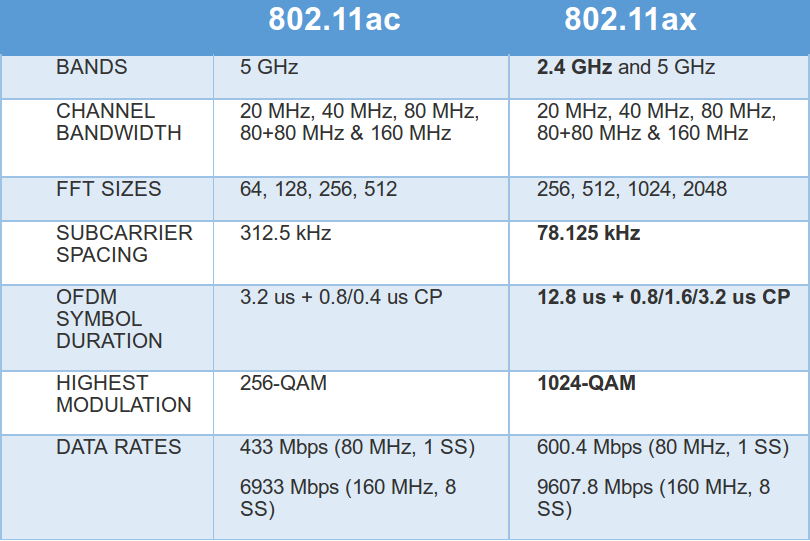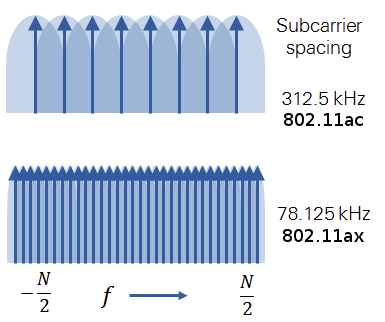802.11ax WiFi, also known as High-Efficiency Wireless (HEW), aims to improve the average throughput per user by a factor of at least 4 times in dense user environments, with a total bandwidth of 10 Gbps over 2.4 and 5.0 GHz . The new standard is still work in progress and is expected to be published in 2019.
802.11ax WiFi key features include:
- Backwards compatible with 802.11a/b/g/n/ac
- Increase 4x the average throughput per user in high-density scenarios, such as train stations, airports and stadiums.
- Data rates and channel widths similar to 802.11ac, with the exception of new Modulation and Coding Sets (MCS 10 and 11) with 1024-QAM.
- Specified for downlink and uplink multi-user operation by means of MU-MIMO and Orthogonal Frequency Division Multiple Access (OFDMA) technology.
- Larger OFDM FFT sizes (4x larger), narrower subcarrier spacing (4x closer), and longer symbol time (4x) for improved robustness and performance in multipath fading environments and outdoors.
- Improved traffic flow and channel access
- Better power management for longer battery life
So 802.11ax looks particularly suited to public space and WiFi in buildings, but if you live in the countryside or other low population density areas, it may not bring that much benefit over 802.11ac. You can read more about 802.11ax in National Instruments’ white paper, where they also mention software and equipment that can be used to work with the upcoming 802.11ax such as WLAN Measurement Suite and PXI RF Vector Signal Transmitter (VST). You can also visit IEEE 802.11ax page.

Jean-Luc started CNX Software in 2010 as a part-time endeavor, before quitting his job as a software engineering manager, and starting to write daily news, and reviews full time later in 2011.
Support CNX Software! Donate via cryptocurrencies, become a Patron on Patreon, or purchase goods on Amazon or Aliexpress






